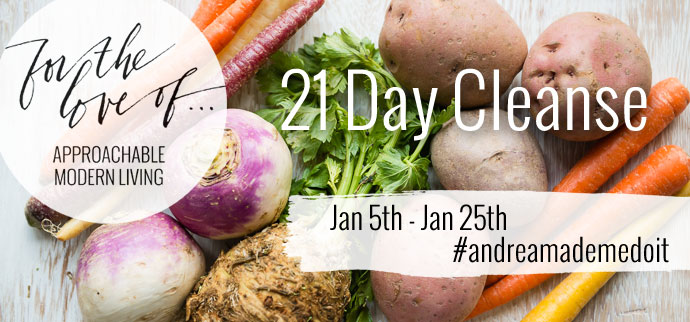
While the recent switch to gluten-free has greatly improved my brain fog and given me a new found spark of energy, I continue to suffer daily with grueling backaches, despite seeing a chiropractor and doing thousands of hours of yoga. I still need to write a recap of my first visit with my new Integrative Doctor, but one of the things she suggested I try for the backaches was to do another elimination diet in the new year, and see how I feel, as she suspects dairy may be part of the culprit. I’m willing to try anything at this point, and since way too many glasses of wine and cheese found its way into my mouth this month, I’m anxious to get started with another round of the 21 day cleanse on Monday January 5th. I invite anyone who is interested to join me, and have already had a tremendous response on Instagram, so if you’re willing to give this a try and looking for further details, read on.
Elimination details:
For 21 days, say no to these foods: dairy, eggs, red meat, soy, gluten, wheat, corn, refined grains, alcohol, soda, caffeine, nightshades and sugar in most forms, including cane sugar, maple syrup, honey, and refined sugar, and of course the vast majority of all processed foods. There are acceptable forms of sugar including date paste and coconut nectar. Most fruits are allowed with the exception of strawberries, bananas and oranges (limes and lemons okay).
For 21 days you’ll eat plenty of these foods: turkey, chicken, fresh fish (not raw), dairy free beverages including coconut milk and almond milk, nuts and seeds like cashews and almonds. legumes and whole grains like brown rice and quinoa, healthy fats including olive oil, coconut oil and ghee, and of course plenty of fruits and vegetables.
Full details of foods to avoid, and why, can be found through this link.
Purpose of the elimination diet:
This particular set of food categories can be extremely taxing on our digestive system, causing a lot of our bodily energy to go towards digestive work. When you eliminate these hard-to-digest foods, you free up much of the energy wasted on initiating immune responses. These foods can also be highly allergenic for certain individuals and by eliminating these foods, and then slowly adding them back in, you can see which, if any, you’re sensitive to. Besides, most Americans would benefit greatly just by the simple removal or reduction of added sugars, soda and alcoholic beverages.
What a typical day looks like:
This elimination diet is more about giving your body a chance to rest and a heal, and less about “dieting” to lose weight. You will have a juice or smoothie in the morning, a mid-morning snack consisting of something like an apple and almond butter, a regular portion size lunch, another juice or smoothie in the afternoon as your mid-day snack, and a regular portion size dinner. You don’t count calories or restrict portions, eating until you are comfortably full, and are allowed to snack on healthy, nutrient dense foods. The idea behind the smoothies for breakfast and mid-afternoon snack, is just to give your body a chance to rest, as these are easier to digest.
How you’ll likely feel:
In the beginning, especially days 2-4, you’ll most likely feel terrible, at least I did. The caffeine and sugar withdrawals were horrendous, and I spent day 2 and 3 in a blurred, exhausted mental fog. Once you reach day 5 though, you’ll start to turn a corner and by day 7, you’ll most likely feel great. Just be prepared for that initial withdrawal period, and try to adjust your schedule and activities accordingly, in other words, if possible don’t sign up for anything too strenuous.
Once you’ve gotten over the tough part, you will likely notice an increase in energy, including less of an afternoon slump, improved digestion, improved mental clarity, and an overall lighter feeling, most likely because you’ll feel less bloated. While this cleanse isn’t about losing weight, by the simple elimination of sugary foods and alcohol, you will most likely loose some weight. By the end of day 21 last time, I had lost 6 pounds, going from 145 to 139 lbs.
Is this a detox?
The idea of detoxing has come to mean a lot of different things, and in the end, it really means something different to everyone. I recently read this article about detoxes, and I can’t say I disagree with it, which is why you’ll find me staying away from the detox word. So if this isn’t a detox, what is it, and is it necessary? I can only speak from my personal experience, but after eating extremely healthy for a year, nothing made me feel as good this year, as I did during the last cleanse. I don’t necessarily believe that I was really “flushing” toxins out of my system, but I absolutely believe that I was giving my body a much needed break by eliminating sugar, alcohol and caffeine. Whether tomatoes and eggplants were really causing my body any harm, I have a hard time believing, but no one can convince me that eliminating sugar and some other foods, was a bad thing for me. All this to say, call it what you want, but I will personally be staying away from the detox word.
Tips and advice:
- I want this to be an encouraging endeavor for all involved, so whether you’ll be joining me on this particular cleanse, or doing some other eating plan like Whole 30, all are welcome to join the Facebook group and follow along on Instagram for support. If you decide to join in, I urge you to at least give yourself 7 days to get the hang of it and see how your body starts feeling. Everyone has different schedules and demands, so if you find this to be too taxing to continue for 21 days, no one is going to fault you, but I encourage you to at least give it a week.
- Keep it simple. I’ll be sharing some recipe ideas and sample meal plans, but if you have a tight schedule, and work outside the home especially, make simple dishes like a roasted chicken which you eat on a salad for lunch, and at night with some steamed veggies. Turkey patties or turkey meatballs are great in a pinch and are quick and easy to whip up. This doesn’t have to be complicated! Save the weekends for trying a new recipe or spicing things up a bit.
- Use shortcuts like a great bottled salad dressing like Tessemae’s, which can be used for dipping turkey patties, marinading chicken breasts in, and of course as a salad dressing. Aloha packs are great too so you can add to water or almond milk for an easy and quick afternoon snack drink.
- Eating out will be a huge challenge, I’m not going to lie. It is nearly impossible, especially at chain restaurants, to find a single menu item which does not contain one of the elimination foods. So keep this in mind when making your schedule. Smaller restaurants, where they make everything in-house, are much more likely to accommodate you by holding the sauce on cuts of poultry, or making a simple side of steamed veggies. If you must eat out, try to call ahead and ask if the kitchen will make accommodations for you.
- It’s easier than you think. Yes, it will be hard, but if you are somewhat used to cooking at home, you can easily make a bounty of recipes and foods that are cleanse-friendly, and won’t leave you feeling bored or deprived. The hardest part will most likely be avoiding temptations like sweets, but in terms of cooking cleanse-approved foods, the possibilities are really endless.
- My last bit of advice, is not to go out on a wild eating bender the day before you begin. Filling up on all your pleasure foods including sugar and alcohol the days before will leave you feeling especially miserable when you begin. Instead, try to focus on limiting sweets, caffeine and alcohol in the 1-2 days leading up to the start of the cleanse.
How is this different than Paleo or Whole 30?
Some grains and legumes are still allowed, while red meat and eggs are not allowed. You are also replacing your typical breakfast meal with a smoothie or juice. Other than that, they are nearly identical in terms of the elimination of sugar and alcohol, gluten and dairy, and focus on eating nutrient-dense foods.
Why this cleanse?
At the time when I first tried this particular program, I was desperate to try and feel better and anxious to get started. It was before my Hashimoto’s diagnosis, but after having my 7th case of strep that year. Because It’s All Good has a loose interpretation of the cleanse program, I saved myself time and frustration and just went with that one. And it worked! I felt fantastic, better than I had felt all year, and so if it ain’t broke, why fix it? While fault can be found in virtually all types of dietary programs, goodness knows Paleo and Whole 30 has seen their fair share of critics, I think this program is pretty solid and relatively easy to maintain. Is it perfect and do I believe in everything Dr. Junger says? Of course not, and I don’t believe you need to spend $400 on supplements and a guide, when you can do this for free at home. That’s why we’re going to do this together and with each other’s support.
Reintroduction phase:
While I’m sure many who follow along may be eager to fit into their jeans again after a fun-filled holiday season, and will rush to have a piece of pie and a glass of wine on day 22, I know some of those participating may in fact be looking out for their trigger foods. I for one will be slowly reintroducing dairy to see if I notice any ill effects. If you want to track your trigger food items, you can slowly reintroduce them, and this document will guide you along the way.
Recommended reading & supplies:
You certainly don’t need to have a copy of IT’S ALL GOODon hand to follow along, but if you do have the book, there are plenty of cleanse friendly recipes that you can follow to mix things up. In her book she refers to them as Detox friendly recipes, and a sample menu is found in the back of the book.
A Pinterest account will do wonders for helping you find plenty of foods to eat. Just look for recipes free of of the elimination foods, which are plentiful. Any whole 30 or paleo recipe, as long as it excludes beef or eggs, will work just fine, as will your typical “eat clean” recipes. I have a clean eating board on Pinterest which includes plenty of ideas as well, and will provide my own sample menu and recipes by the end of the week.
You don’t need a juicer or a powerful Vitamix 1363 CIA Pro to get through this, but if you do want to invest in a basic introductory juicer, Breville
and Omegas are great, and a simple Jack Lalanne Power Juicer
will also get you started just fine. And plenty of people also love Blendtec
, Magic Bullet
and Ninja Professional Blender
, which are considerably cheaper than a Vitamix.
If you want a recap of my cleanse experience last time, you can read this recap post and this post, which goes into how to thrive on a cleanse.
If you aren’t ready for a cleanse, but are eager to turn a tide in the new year, perhaps you want to try something less restrictive like the 30 day challenge we did earlier this year. I put together a clean eating swapping guide, which will hopefully prove useful in your journey.
Wherever you are in your health journey, and whatever your goals may be, once again I encourage anyone interested in testing the waters or diving head first, to join us in the private Facebook group, and follow along with me on Instagram. We’ll begin on Monday, January 5th.
Please let me know if I’ve missed any thing, and of course ask any questions you may have!






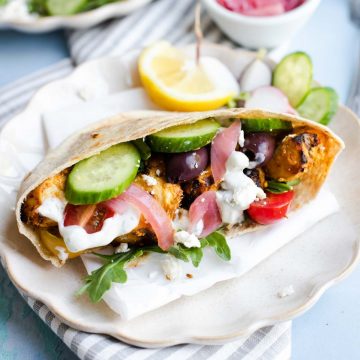
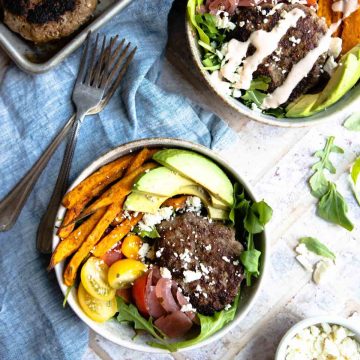
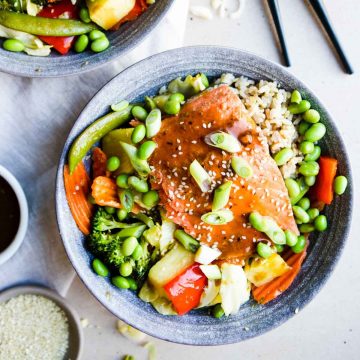
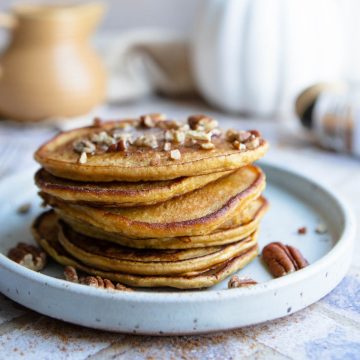
Lyndsey says
You didn’t mention anything about quinoa, gluten free oats, rice, what are your thoughts about these during the cleanse?
Also, I was researching “nightshades”. Are those mainly potatoes (excluding sweet potatoes), tomatoes, eggplants (the rest were veggies I don’t eat frequently). Just making sure I haven’t missed any. Thanks!
Jessica says
So, I’m just now analyzing this whole thing. It’s a lot like the Whole 30, isn’t it? Just you took out eggs and red meat and put beans/legumes back in. Is that right?